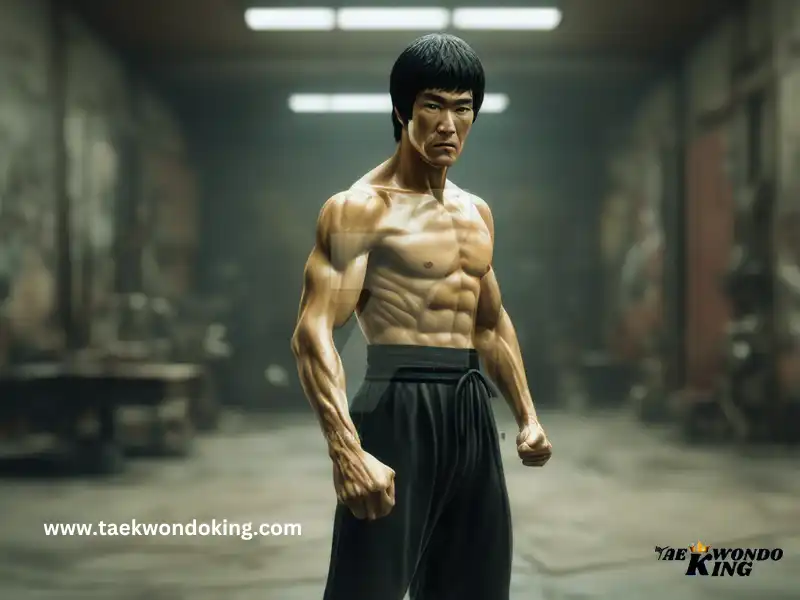
Self-defense is an important skill and many martial arts can teach you how to defend yourself. It is important to find the right martial art for you, as different martial arts have different strengths and weaknesses. Some are better for sport and competition, while others are better for self-defense. Popular martial arts for self-defense include Judo, Jujitsu, Aikido, Karate, and Krav Maga. Consider your personal needs and goals when selecting a martial art, and look for one that has an emphasis on practical self-defense techniques. In this article, today we are talking about What is the Best Martial Art for Self-defense?
The best martial art for self-defense is one that equips you with the knowledge and skills to protect yourself and those you care about from physical harm. It should not only teach physical techniques like blocking and striking but also mental and emotional strategies for dealing with dangerous situations. It should also provide practical strategies to help you avoid physical confrontation if possible. There are many different martial arts, so it’s important to consider your goals and find the one that best suits your needs.
What is the list of the Best Martial Art for Self-defense?
- Brazilian Jiu-Jitsu (BJJ)
- Boxing
- Muay Thai
- MMA
- Judo
- Karate
- Taekwondo
- Krav Maga
- Kung Fu
- Arkido.
Brazilian Jiu-Jitsu (BJJ): The Pinnacle of Self-Defense – Technique, Control, and Adaptability
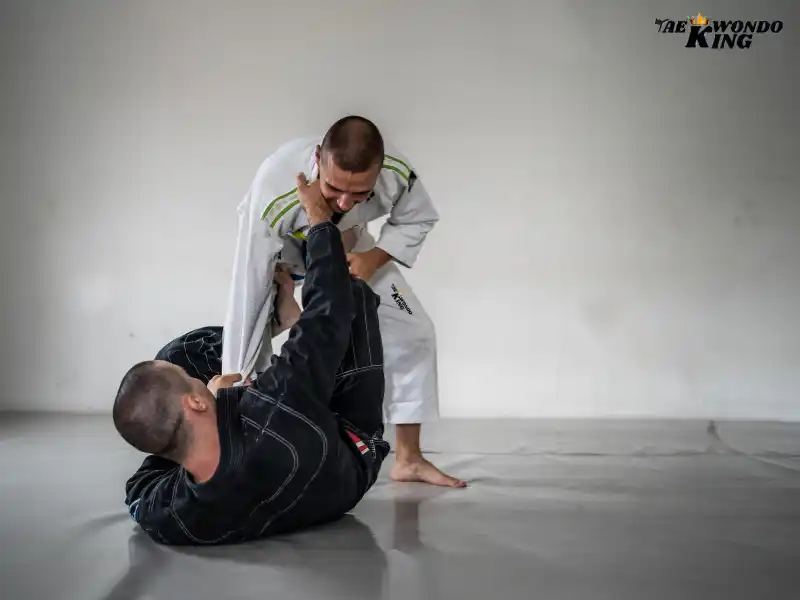
In the realm of martial arts, Brazilian Jiu-Jitsu (BJJ) has emerged as a paradigm for self-defense, revolutionizing the approach to personal protection. This article explores the reasons why BJJ is often hailed as the best martial art for self-defense, emphasizing its technical prowess, focus on control, and unparalleled adaptability in real-world situations.
Ground Control and Submissions:
One of the distinctive aspects that sets BJJ apart is its emphasis on ground control and submissions. This section will delve into how BJJ practitioners, also known as grapplers, are trained to take the fight to the ground, where leverage and technique play a pivotal role. The art’s focus on submissions, such as joint locks and chokes, provides a practical and effective means of neutralizing opponents without relying on striking.
Adaptability to Various Body Types:
BJJ is renowned for its adaptability to various body types and sizes, making it a martial art accessible to individuals of different physical attributes. This section will highlight how BJJ’s focus on leverage and technique allows practitioners to overcome size and strength disparities, providing a realistic advantage in self-defense scenarios where opponents may be larger or more powerful.
Defense Against Strikes and Multiple Attackers:
Unlike some traditional martial arts, BJJ doesn’t shy away from addressing strikes. This section will discuss how BJJ training incorporates defense against strikes, preparing practitioners for real-world situations where punches or kicks may be involved. Additionally, BJJ’s emphasis on controlling and submitting one opponent at a time offers a strategic advantage in scenarios involving multiple attackers.
Street-Effective Techniques:
BJJ is often lauded for its street effectiveness. This section will explore how the art’s techniques are designed to be practical and efficient in real-world situations, focusing on neutralizing threats swiftly and effectively without unnecessary theatrics or elaborate movements.
Sparring and Live Rolling:
A crucial component of BJJ training is sparring, or live rolling, where practitioners engage in controlled, dynamic, and unpredictable scenarios. This section will emphasize how sparring in BJJ allows practitioners to test their skills against resisting opponents, enhancing their ability to think on their feet and apply techniques in a realistic setting.
Self-Control and De-escalation:
BJJ training emphasizes the importance of self-control and de-escalation tactics. This section will discuss how BJJ practitioners are trained not only to defend themselves physically but also to assess situations, control emotions, and seek non-violent resolutions whenever possible.
Ground Survival and Escaping Threats:
BJJ equips practitioners with the skills to survive on the ground, even in disadvantageous positions. This section will explore how BJJ’s focus on escapes and defensive techniques enables practitioners to effectively navigate and survive various ground threats, a crucial aspect in self-defense situations.
Minimal Injuries for Self-Defense:
Another factor that makes BJJ stand out for self-defense is its emphasis on minimizing injuries. This section will discuss how the art’s controlled training environment and focus on submissions without striking contribute to a lower risk of causing severe harm to an opponent, aligning with the principles of self-defense rather than aggression.
Legal and Ethical Considerations:
BJJ places a strong emphasis on legal and ethical considerations in self-defense scenarios. This section will delve into how BJJ practitioners are trained to use force proportionally, understanding the legal implications of self-defense actions and emphasizing the importance of responsible martial arts practice.
Boxing: A Powerhouse in Self-Defense – Striking Prowess, Agility, and Mental Toughness
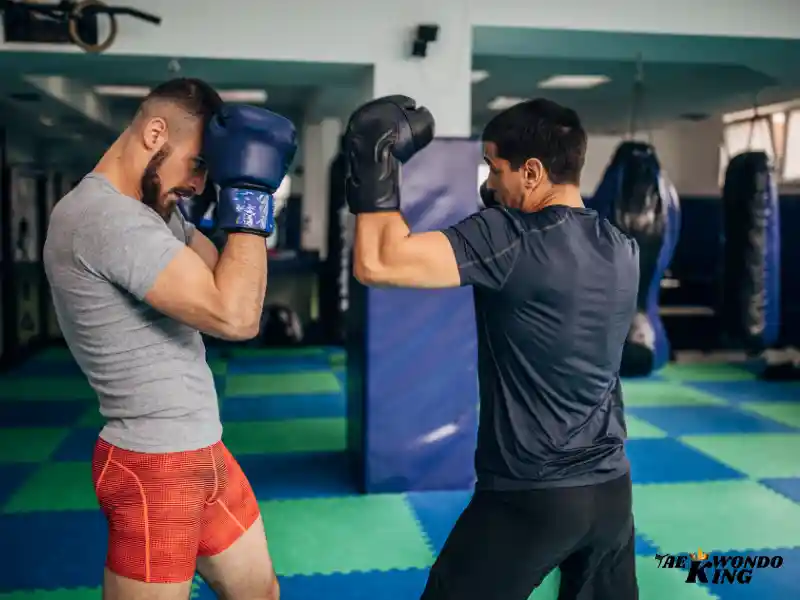
In the realm of martial arts tailored for self-defense, boxing stands out as a powerhouse, combining striking prowess, agility, and mental toughness to create a formidable skill set. Here’s why boxing is widely regarded as the best martial art for effective self-defense.
Striking Precision and Power:
Boxing places a primary focus on striking with the fists, honing precision and power in every punch. This section will delve into how the art’s emphasis on effective hand techniques allows practitioners to deliver impactful blows, creating a solid foundation for self-defense situations.
Footwork and Agility:
Boxers are renowned for their exceptional footwork and agility, essential elements in navigating and evading potential threats. This section will highlight how boxing’s emphasis on lateral movement, pivoting, and quick foot transitions provides practitioners with the ability to control distance and avoid confrontations.
Defensive Maneuvers:
Boxing isn’t just about offense; it’s equally about defense. This section will explore how boxers are trained in defensive maneuvers, including blocks, slips, and rolls, enabling them to evade or minimize the impact of incoming strikes – a crucial aspect in self-defense scenarios.
Conditioning and Endurance:
A key component of boxing training is conditioning and endurance. This section will discuss how the rigorous training routines in boxing enhance cardiovascular fitness, stamina, and overall physical resilience, ensuring practitioners are prepared for the demands of a self-defense encounter.
Mental Toughness and Focus:
Boxing instills mental toughness and focus attributes vital in high-pressure situations. This section will emphasize how the mental discipline developed in boxing enables practitioners to stay calm, think strategically, and execute precise techniques under stress – critical elements in effective self-defense.
Versatility in Range and Situation:
Boxing’s versatility in various ranges makes it adaptable to different self-defense situations. This section will discuss how the art’s proficiency in close-quarters combat and the ability to maintain effective striking at a distance provides practitioners with tools for a range of encounters.
Confidence and Deterrence:
Mastering the art of boxing instills a sense of confidence in practitioners, often acting as a deterrent to potential attackers. This section will explore how the visible athleticism and striking prowess of a trained boxer can discourage aggression, contributing to personal safety through deterrence.
Accessible and Time-Efficient:
Boxing’s accessibility and efficiency make it an ideal choice for self-defense training. This section will discuss how boxing training requires minimal equipment, making it accessible to a broad audience. Additionally, its straightforward techniques allow for effective skill development within a relatively short timeframe.
Muay Thai: The Ultimate Self-Defense Art – Power, Clinch Control, and Unmatched Striking
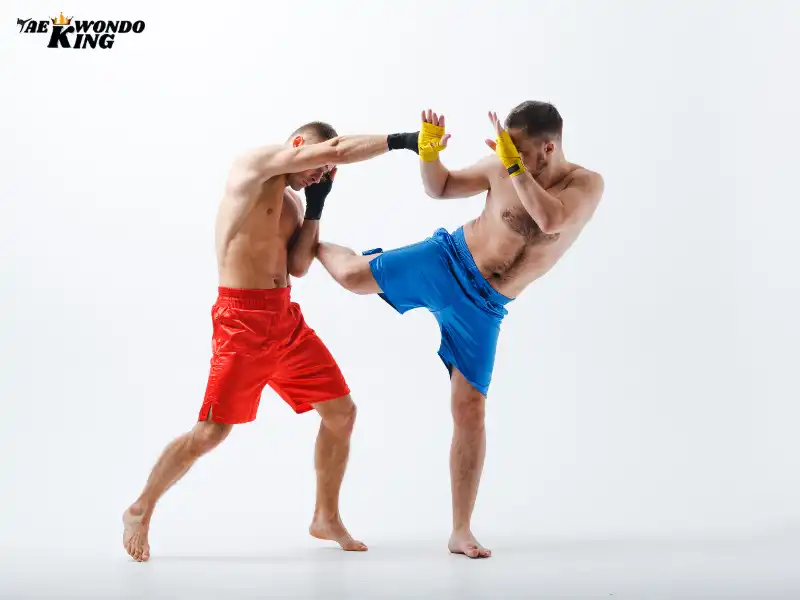
Muay Thai, the “Art of Eight Limbs,” has earned a reputation as the ultimate self-defense martial art, seamlessly blending power-packed strikes, clinch control, and a unique array of offensive and defensive techniques. Here’s why Muay Thai stands out as the best martial art for self-defense.
Powerful Striking Techniques:
Muay Thai is renowned for its devastating striking techniques, including kicks, punches, elbows, and knee strikes. This section will delve into how the art’s emphasis on full-body engagement and powerful strikes provides practitioners with the ability to neutralize threats efficiently, making it a formidable choice for self-defense scenarios.
Clinch Control and Close-Quarter Combat:
A distinctive feature of Muay Thai is its clinch work, allowing practitioners to control opponents in close-quarters combat. This section will highlight how Muay Thai’s clinch techniques, such as knee strikes and off-balancing, offer effective ways to dominate and neutralize threats at close range, making it highly practical for self-defense.
Adaptability to Real-World Scenarios:
Muay Thai’s training methodology emphasizes realistic scenarios, preparing practitioners for the unpredictability of real-world encounters. This section will discuss how the art’s focus on sparring and situational drills enhances adaptability, enabling practitioners to apply techniques effectively in various self-defense situations.
Conditioning and Mental Toughness:
Muay Thai training places a strong emphasis on physical conditioning and mental toughness. This section will explore how the rigorous training routines in Muay Thai develop cardiovascular fitness, endurance, and mental resilience – crucial attributes for self-defense situations that may require sustained effort and focus.
Legitimate Striking Defense Techniques:
Muay Thai doesn’t just focus on offense; it also equips practitioners with effective striking defense techniques. This section will discuss how Muay Thai practitioners learn to check kicks, block punches, and evade strikes, creating a well-rounded skill set for both offense and defense in self-defense scenarios.
Versatility in Stand-Up Striking:
Muay Thai’s proficiency in stand-up striking makes it versatile for self-defense situations. This section will explore how the art’s comprehensive striking techniques, including elbows and knee strikes, provide practitioners with options for efficiently defending against and countering various types of attacks.
Psychological Edge and Confidence:
Muay Thai instills a psychological edge and confidence in practitioners. This section will highlight how the mental toughness developed in Muay Thai training contributes to a confident demeanor, often acting as a deterrent to potential attackers and enhancing personal safety through assertiveness.
Global Recognition and Practical Applicability:
Muay Thai’s global recognition as a practical and effective martial art adds to its appeal for self-defense. This section will discuss how the art’s widespread acknowledgment, coupled with its practical applicability, makes Muay Thai an ideal choice for individuals seeking reliable skills for personal protection.
MMA: The Ultimate Self-Defense Arsenal – Versatility, Integrated Techniques, and Real-World Preparedness
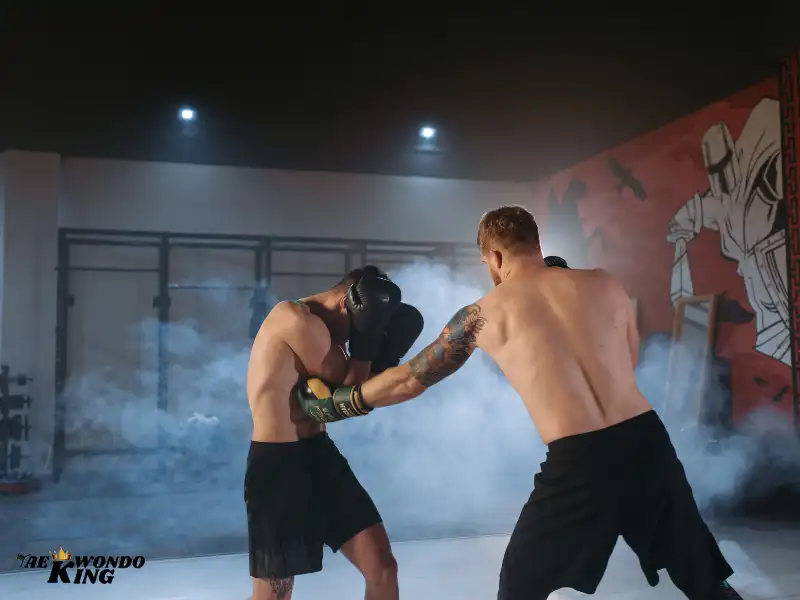
Mixed Martial Arts (MMA) has risen to prominence as the ultimate self-defense martial art, offering a comprehensive arsenal of techniques that seamlessly blend striking, grappling, and diverse combat disciplines. Here’s why MMA stands out as the best martial art for self-defense.
Versatility in Combat Disciplines:
MMA’s hallmark is its versatility, incorporating elements from various martial arts disciplines. This section will explore how practitioners learn striking techniques from disciplines like boxing and Muay Thai, grappling techniques from Brazilian Jiu-Jitsu, and defensive maneuvers from wrestling, creating a well-rounded skill set adaptable to any self-defense scenario.
Integrated Striking and Grappling:
Unlike traditional martial arts that focus solely on striking or grappling, MMA seamlessly integrates both. This section will delve into how MMA practitioners are trained to transition effortlessly between striking and grappling, providing a multifaceted approach to self-defense that covers various ranges and situations.
Adaptability to Real-World Scenarios:
MMA’s training methodology places a strong emphasis on real-world scenarios, preparing practitioners for unpredictable encounters. This section will discuss how the art’s sparring sessions and live drills enhance adaptability, enabling practitioners to apply techniques effectively in dynamic and unscripted self-defense situations.
Effective Striking and Defense:
MMA incorporates effective striking techniques from disciplines such as boxing, kickboxing, and Muay Thai. This section will highlight how practitioners not only learn powerful offensive strikes but also effective defensive maneuvers, creating a balanced skill set for both offense and defense in self-defense encounters.
Grappling and Ground Control:
MMA’s foundation in grappling arts like Brazilian Jiu-Jitsu and wrestling equips practitioners with crucial ground control techniques. This section will explore how MMA practitioners learn to take opponents down, secure dominant positions, and apply submissions – essential skills for self-defense situations that may end up on the ground.
Physical Conditioning and Mental Toughness:
MMA training emphasizes rigorous physical conditioning and mental toughness. This section will discuss how the demanding workouts, sparring sessions, and mental resilience developed in MMA training contribute to physical readiness and the ability to stay focused under stress – vital components for effective self-defense.
Realistic Self-Defense Scenarios:
MMA training often involves simulations of real-world self-defense scenarios. This section will highlight how practitioners engage in drills that simulate common self-defense situations, enhancing their ability to assess threats, react decisively, and apply appropriate techniques in real-life scenarios.
Global Recognition and Legitimacy:
MMA’s global recognition and legitimacy as a combat sport adds to its credibility for self-defense. This section will discuss how the sport’s widespread acknowledgment, coupled with its proven effectiveness in professional competitions, reinforces the practical applicability of MMA techniques in real-world self-defense situations.
Judo: The Art of Self-Defense Mastery – Throws, Grappling, and Tactical Adaptability
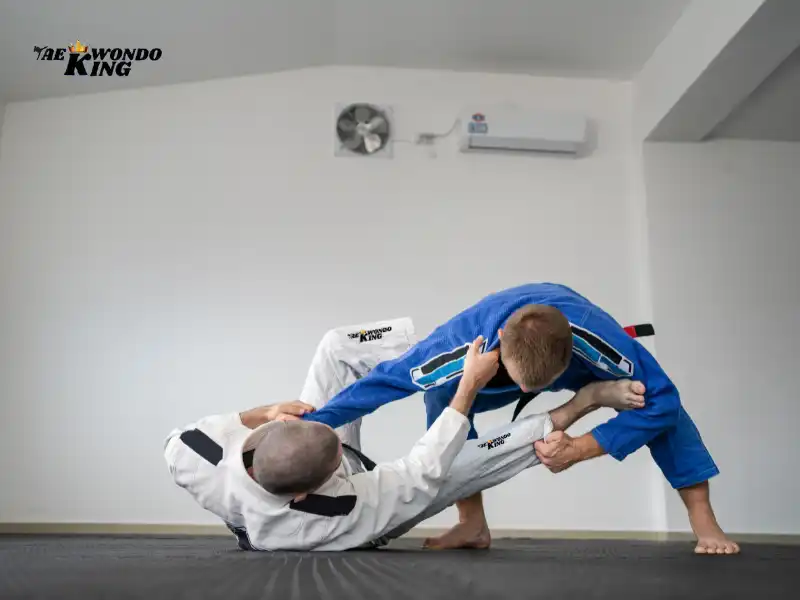
Judo, a Japanese martial art founded on the principles of maximum efficiency and mutual benefit, has proven itself to be a powerful and versatile system for self-defense. Here’s why Judo is considered the best martial art for effective self-defense.
Throws and Takedowns:
At the heart of Judo lies its mastery of throws and takedowns. This section will explore how Judo practitioners, known as judoka, are trained to unbalance and throw opponents using leverage and technique. These skills are invaluable in self-defense situations, allowing practitioners to quickly neutralize threats while maintaining control.
Grappling and Ground Control:
Judo excels in the realm of grappling, providing practitioners with the ability to control and subdue opponents on the ground. This section will highlight how Judo’s emphasis on pins, joint locks, and strangles enables Judoka to manage situations where self-defense may involve ground encounters, offering effective control without relying on striking.
Adaptability in Close Quarters:
Judo’s focus on adaptability in close quarters makes it highly practical for self-defense. This section will delve into how judoka develops the ability to maneuver in tight spaces, utilizing throws, sweeps, and clinch work to gain an advantage and control over opponents in confined environments.
Redirecting and Utilizing Opponent’s Force:
A fundamental principle of Judo is using an opponent’s force against them. This section will explore how Judo practitioners learn to redirect and manipulate an aggressor’s energy, turning their momentum into a strategic advantage – a skill crucial for self-defense encounters where swift and controlled responses are essential.
Effective Self-Defense Techniques:
Judo’s emphasis on simplicity and efficiency in techniques makes it highly effective for self-defense. This section will discuss how the art’s techniques are designed to be practical and easily applied, ensuring that judoka can respond effectively to a variety of physical threats in real-world situations.
Emphasis on Timing and Precision:
Timing and precision are key elements of Judo, contributing to its effectiveness in self-defense scenarios. This section will highlight how judoka refine their sense of timing and execute techniques with precision, allowing them to capitalize on an opponent’s vulnerabilities and act decisively.
Physical Conditioning and Mental Focus:
Judo training incorporates rigorous physical conditioning and mental focus. This section will discuss how demanding workouts, randori (free practice), and disciplined training contribute to judoka’s physical readiness and mental resilience – crucial components for effective self-defense.
Practical Applicability and Legitimacy:
Judo’s practical applicability in self-defense situations is complemented by its global legitimacy. This section will discuss how Judo’s recognition as an Olympic sport and its widespread practice globally reinforce the credibility and effectiveness of its techniques in real-world self-defense encounters.
Karate: The Art of Precision and Power in Self-Defense – Strikes, Blocks, and Mental Fortitude
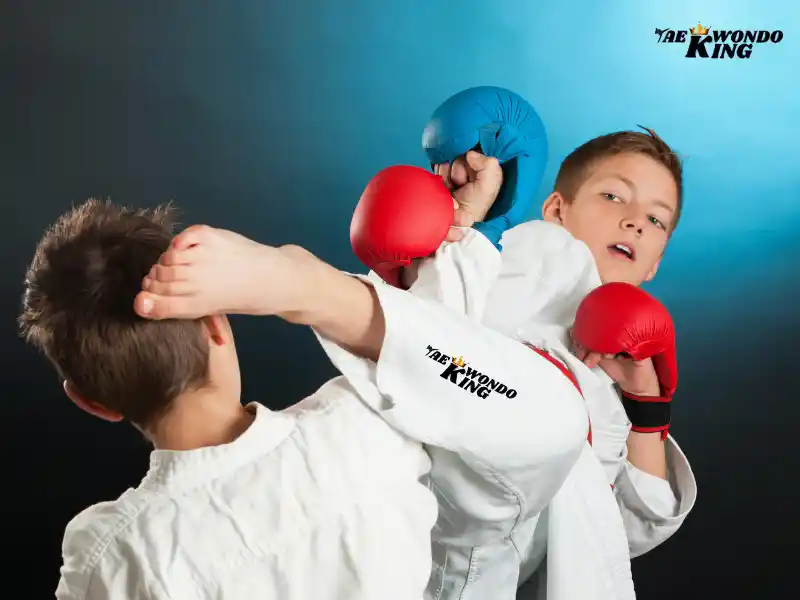
Karate, with its roots in Okinawan martial traditions, has emerged as a highly effective and respected martial art for self-defense. Here’s why Karate stands out as the best martial art for mastering the art of self-defense.
Striking Precision and Power:
Karate is renowned for its emphasis on powerful and precise striking techniques. This section will delve into how Karate practitioners, known as karateka, hone their punches, kicks, knee strikes, and elbow strikes, creating a formidable arsenal for neutralizing threats in self-defense situations.
Blocks and Defensive Maneuvers:
A distinctive feature of Karate is its comprehensive set of blocks and defensive maneuvers. This section will explore how karateka is trained to deflect and neutralize attacks using efficient and strategic blocks, providing a solid foundation for self-defense by minimizing the impact of strikes.
Versatility in Striking Ranges:
Karate’s versatility lies in its proficiency across different striking ranges. This section will highlight how karateka develops the ability to strike effectively from various distances, adapting their techniques to suit the proximity of the threat, making Karate practical for a wide range of self-defense scenarios.
Kata Training for Muscle Memory:
Karate employs kata, predefined sequences of movements, to instill muscle memory and refine techniques. This section will discuss how kata training enhances a karateka’s ability to execute techniques automatically, fostering quick and precise responses in high-pressure self-defense situations.
Mental Fortitude and Discipline:
Karate places a strong emphasis on mental fortitude and discipline. This section will explore how the mental resilience developed through rigorous training enables karateka to stay focused, composed, and assertive – crucial attributes for effective self-defense when confronted with threats.
Realistic Self-Defense Drills:
Karate training often includes realistic self-defense drills. This section will highlight how karateka engages in simulated scenarios, allowing them to practice and refine their techniques in situations that mimic real-world encounters, contributing to their readiness for actual self-defense situations.
Conditioning and Physical Fitness:
Karate training incorporates physical conditioning to enhance strength, flexibility, and endurance. This section will discuss how the demanding workouts and sparring sessions contribute to karateka’s physical readiness, ensuring they are well-prepared for the physical demands of self-defense.
Global Recognition and Timeless Applicability:
Karate’s global recognition and widespread practice contribute to its timeless applicability for self-defense. This section will discuss how Karate’s status as a traditional martial art with a global following reinforces its credibility and practical effectiveness in real-world self-defense encounters.
Taekwondo: The Dynamic Art of Self-Defense – Kicks, Strikes, and Tactical Agility
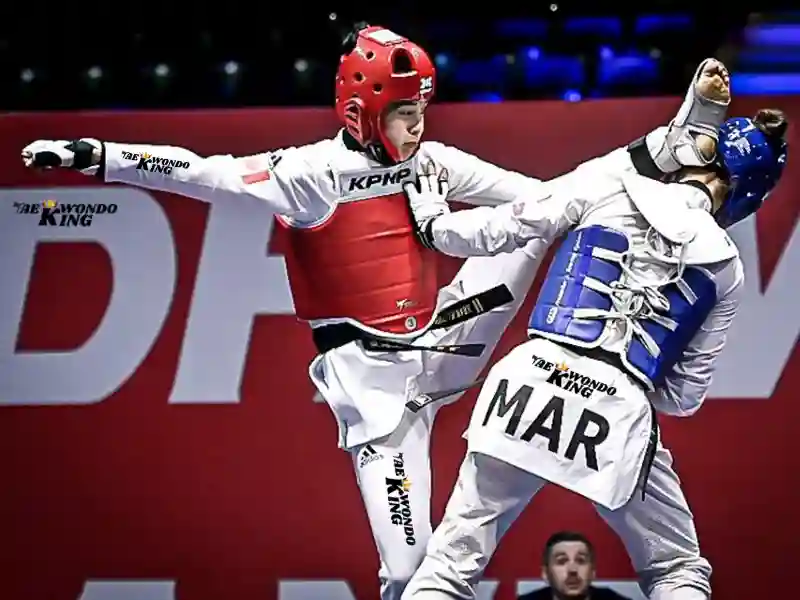
Taekwondo, a Korean martial art renowned for its high-flying kicks and powerful strikes, stands out as an exceptional choice for self-defense. Here’s why Taekwondo is considered the best martial art for mastering the art of self-defense.
Dynamic Kicking Techniques:
Taekwondo is synonymous with dynamic kicking techniques that set it apart from other martial arts. This section will delve into how Taekwondo practitioners, known as taekwondo, master a diverse array of kicks, including roundhouse kicks, spinning kicks, and jumping kicks, providing effective tools for keeping adversaries at a distance in self-defense situations.
Precision Strikes and Hand Techniques:
While Taekwondo is renowned for its kicks, it also emphasizes precision strikes and hand techniques. This section will highlight how taekwondo develops powerful punches, knife-hand strikes, and elbow strikes, creating a well-rounded skill set for both long-range and close-quarters self-defense encounters.
Tactical Agility and Footwork:
Taekwondo places a strong emphasis on tactical agility and footwork. This section will explore how taekwondoes hone their ability to move quickly, evade attacks, and maintain strategic positioning, contributing to their effectiveness in navigating diverse self-defense scenarios.
Versatility in Striking Ranges:
Taekwondo’s versatility lies in its proficiency across different striking ranges. This section will emphasize how taekwondo, through their training, acquire the skills to strike effectively from various distances, adapting their techniques to suit the proximity of the threat in real-world self-defense situations.
Defensive Maneuvers and Blocks:
Taekwondo employs effective defensive maneuvers and blocks to neutralize attacks. This section will discuss how taekwondo are trained to deflect and counteract strikes using swift and strategic blocks, ensuring a proactive defense in self-defense encounters.
Sparring and Realistic Scenario Training:
Taekwondo training often includes sparring sessions and realistic scenario drills. This section will highlight how taekwondo engages in dynamic and controlled sparring, allowing them to apply their techniques against resisting opponents and simulate real-world self-defense situations.
Mental Discipline and Focus:
Taekwondo instills mental discipline and focus in its practitioners. This section will explore how the mental resilience developed through rigorous training enables taekwondo to stay calm, think strategically, and act decisively – essential qualities for effective self-defense.
Global Recognition and Sporting Pedigree:
Taekwondo’s global recognition as an Olympic sport contributes to its credibility for self-defense. This section will discuss how the sport’s widespread acknowledgment and its inclusion in international competitions reinforce the practical applicability of Taekwondo techniques in real-world self-defense situations.
Krav Maga: Unparalleled Self-Defense Excellence – Practical Techniques, Realistic Scenarios, and Rapid Response
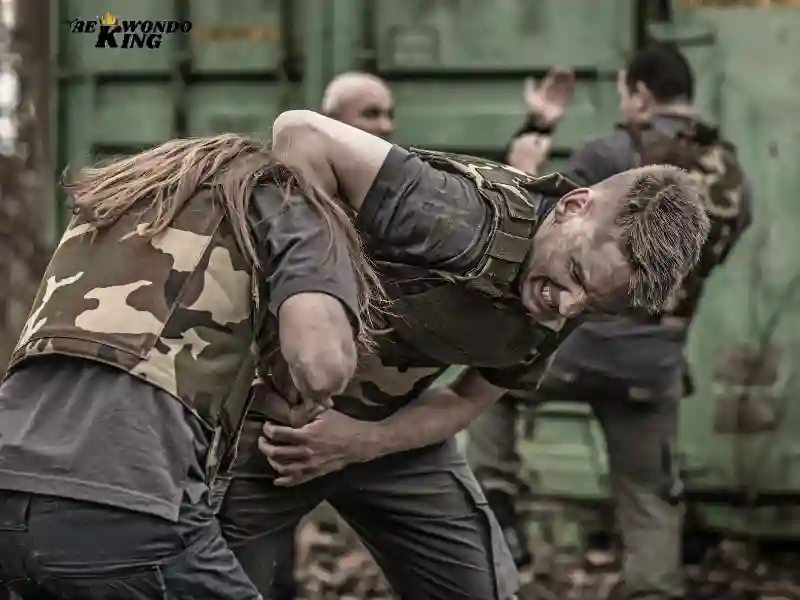
Krav Maga, the martial art developed for the Israeli military, has rapidly gained recognition as the most effective and practical system for self-defense. Here’s why Krav Maga stands out as the best martial art for mastering the art of self-defense.
Practical and Efficient Techniques:
Krav Maga focuses on practicality and efficiency in its techniques. This section will delve into how Krav Maga practitioners, known as Kravists, learn straightforward and effective techniques that prioritize neutralizing threats swiftly and decisively, making it ideal for real-world self-defense scenarios.
Adaptability to Unpredictable Situations:
Krav Maga’s training methodology emphasizes adaptability to unpredictable situations. This section will highlight how Kravists are trained to assess threats quickly, adapt their techniques on the fly, and respond effectively to a variety of self-defense scenarios, including armed and multiple assailant situations.
Realistic Scenario Training:
Krav Maga’s signature is realistic scenario training. This section will explore how Kravists engage in drills that simulate common self-defense situations, allowing them to apply and refine their techniques in dynamic and unscripted scenarios, enhancing their readiness for actual encounters.
Rapid Counterattacks and Strikes:
Krav Maga places a strong emphasis on rapid counterattacks and strikes. This section will discuss how Kravists are trained to counteract threats aggressively, utilizing strikes to vulnerable areas with speed and precision, providing a proactive defense in self-defense situations.
Defensive Maneuvers and Escapes:
Krav Maga equips practitioners with effective defensive maneuvers and escapes. This section will highlight how Kravists learn to defend against grabs, holds, and chokes, employing practical techniques that enable them to escape from various physical threats efficiently.
Combat Mindset and Mental Toughness:
Krav Maga instills a combat mindset and mental toughness. This section will explore how the mental resilience developed through Krav Maga training prepares practitioners to stay focused, react decisively, and endure the stress of real-world self-defense situations.
Global Recognition and Military Pedigree:
Krav Maga’s global recognition is amplified by its military pedigree. This section will discuss how the martial arts’s roots in Israeli military training contribute to its credibility and effectiveness, reinforcing its status as a practical and battle-tested system for self-defense.
Continuous Evolution and Adaptation:
Krav Maga is continually evolving to address new threats and challenges. This section will highlight how the system adapts to incorporate insights from real-world incidents, ensuring that Kravists are equipped with the most effective techniques for modern self-defense.
Kung Fu: The Ancient Art of Self-Defense Mastery – Strikes, Forms, and Inner Strength
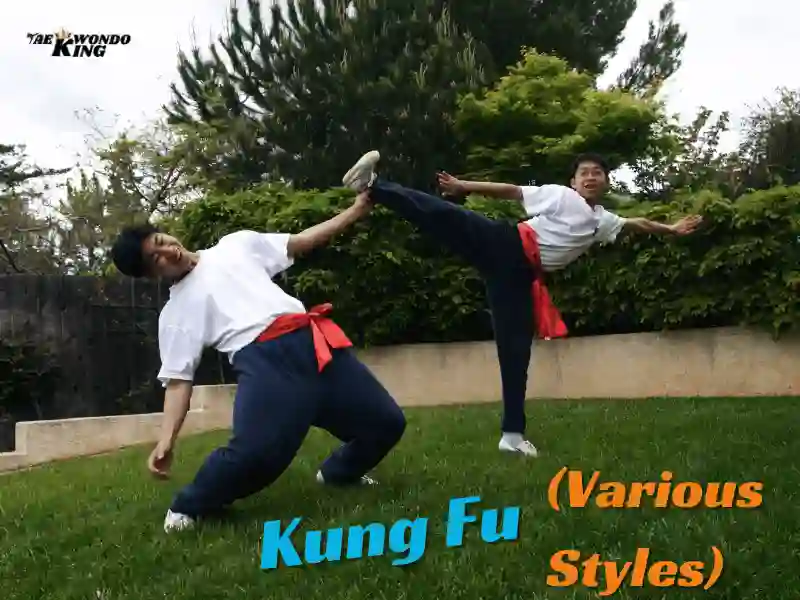
Kung Fu, an ancient Chinese martial art with a rich history, has long been revered for its holistic approach to combat and self-defense. Here’s why Kung Fu stands out as the best martial art for mastering the art of self-defense.
Diverse Striking Techniques:
Kung Fu is renowned for its diverse and dynamic striking techniques. This section will delve into how Kung Fu practitioners, known as martial artists or Kung Fu artists, master a wide array of strikes, including kicks, punches, and hand techniques, providing them with a versatile set of tools for effective self-defense.
Forms and Fluid Movements:
A distinctive feature of Kung Fu is its emphasis on forms or “katas,” predefined sequences of movements that incorporate various techniques. This section will explore how practicing forms enhances a martial artist’s fluidity, precision, and ability to seamlessly transition between different defensive and offensive maneuvers in self-defense scenarios.
Inner Strength and Mental Focus:
Kung Fu places a strong emphasis on developing inner strength and mental focus. This section will highlight how Kung Fu artists cultivate mental resilience, discipline, and focus through meditation, breathing exercises, and mindful training, contributing to their effectiveness in self-defense situations.
Strategic Use of Energy:
Kung Fu is rooted in the philosophy of using an opponent’s energy against them. This section will discuss how martial artists learn to redirect and manipulate an aggressor’s force, turning it into a strategic advantage – a fundamental skill for self-defense encounters that require quick and calculated responses.
Joint Locks and Grappling Techniques:
Kung Fu incorporates joint locks, throws, and grappling techniques. This section will explore how martial artists are trained in techniques that enable them to control and neutralize opponents at close quarters, offering effective options for self-defense in situations that may involve grappling or ground encounters.
Defensive Maneuvers and Blocks:
Kung Fu equips practitioners with effective defensive maneuvers and blocks. This section will discuss how martial artists learn to deflect and neutralize attacks using efficient and strategic blocks, ensuring a proactive defense in self-defense encounters.
Versatility in Weaponry:
Some styles of Kung Fu include training with traditional Chinese weapons. This section will highlight how martial artists proficient in weapon forms gain an added layer of versatility, enhancing their ability to defend against armed assailants in self-defense situations.
Global Recognition and Cultural Heritage:
Kung Fu’s global recognition and deep cultural heritage contribute to its credibility for self-defense. This section will discuss how the art’s rich history, philosophy, and diverse styles have captivated practitioners worldwide, reinforcing the practical applicability of Kung Fu techniques in real-world self-defense encounters.
Arkido: The Revolutionary Approach to Self-Defense – Practical Techniques, Adaptive Strategies, and Real-World Readiness
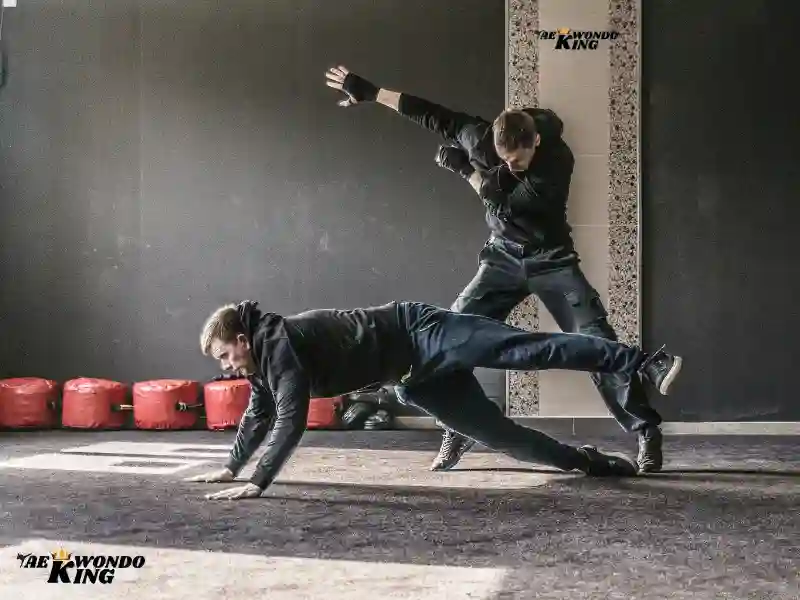
Arkido, a contemporary martial art, has emerged as a revolutionary system for self-defense, blending practical techniques with adaptive strategies. Here’s why Aikido stands out as the best martial art for mastering the art of self-defense.
Practical and Modern Techniques:
Arkido focuses on practical and modern techniques designed for real-world self-defense scenarios. This section will delve into how Arkido practitioners, known as Arkidists, learn efficient and effective techniques that prioritize neutralizing threats practically and straightforwardly.
Adaptive Strategies for Varied Threats:
Arkido’s training methodology emphasizes adaptive strategies for handling varied threats. This section will highlight how Arkidists are trained to assess and respond to different types of attacks, whether they involve striking, grappling, or armed assailants, ensuring a versatile skill set for self-defense.
Realistic Scenario Training:
Arkido incorporates realistic scenario training. This section will explore how Arkidists engage in drills that simulate common self-defense situations, allowing them to apply and refine their techniques in dynamic and unscripted scenarios, enhancing their readiness for actual encounters.
Rapid Response and Counterattacks:
Arkido places a strong emphasis on rapid response and counterattacks. This section will discuss how Arkidists are trained to counteract threats aggressively, employing precise strikes and strategic maneuvers to neutralize adversaries swiftly and decisively.
Defensive Maneuvers and Escapes:
Arkido equips practitioners with effective defensive maneuvers and escapes. This section will highlight how Arkidists learn to defend against various types of attacks, utilizing practical techniques that enable them to escape and create distance from potential threats efficiently.
Mental Resilience and Tactical Awareness:
Arkido instills mental resilience and tactical awareness in its practitioners. This section will explore how the mental strength developed through Arkido training prepares Arkidists to stay focused, think strategically, and act decisively in high-pressure self-defense situations.
Global Recognition and Modern Approach:
Arkido’s global recognition is bolstered by its modern and innovative approach. This section will discuss how the martial art’s contemporary techniques and adaptability contribute to its credibility and effectiveness, positioning Arkido as a relevant and practical system for self-defense in the modern world.
Continuous Evolution and Innovation:
Arkido is continually evolving to address new threats and challenges. This section will highlight how the system adapts to incorporate insights from real-world incidents, ensuring that Arkidists are equipped with the most effective and up-to-date techniques for modern self-defense.
Most Effective Martial Arts in a Real Fight?
When it comes to real fighting, many people believe that Brazilian Jiu-Jitsu (BJJ) is the most effective. BJJ combines grappling techniques, joint locks, and submission holds to quickly end fights on the ground. Other martial arts, such as judo, Muay Thai, and karate, can also be effective in a real fight, as each has its advantages and techniques that can be used in different situations. It’s important to practice whichever martial art you choose so that you can be effective in a real fight.
What is the Best Martial Arts for Street Fighting?
When it comes to martial arts for street fighting, there are many options to choose from. In general, the best martial arts for street fighting are those that focus on self-defense and have techniques that can be adapted for real-world situations. Muay Thai, Krav Maga, and Brazilian Jiu-Jitsu are all highly recommended disciplines for street fighting, as they provide a wide range of self-defense techniques as well as physical and mental conditioning for staying safe.
Combat Best Martial Art for self-defense
Martial arts can be a great way to protect yourself as a self-defense tool. Several styles of martial arts can be used for self-defense, like judo, aikido, taekwondo, karate, and Brazilian jiu-jitsu. Each martial art offers different advantages and it is important to research the different styles to decide which one best suits your needs. For instance, judo and aikido are more grappling-based while taekwondo and karate are striking-based. Brazilian jiu-jitsu incorporates both. All of these martial arts can be useful for self-defense as they all teach how to defend oneself against attackers.
How do I choose Martial Arts?
Choosing the right martial art for you can be a difficult decision. There are many different styles available, each with its benefits and drawbacks. It is important to do your research and find a style that is suitable for your goals, whether that be learning self-defense, getting a physical workout, or exploring the spiritual aspects of martial arts.
What is the Best Martial Art for Self-defense for Women?
Women are more vulnerable to experiencing violence than men, and martial arts can be a great way to help them protect themselves. There are many different types of martial arts that women can use for self-defense, each with their strengths. For instance, Krav Maga is an Israeli-developed system that is designed to help women defend themselves from multiple assailants, while Muay Thai is a striking-based martial art that teaches women how to use their fists and elbows for self-defense. Brazilian Jiu-Jitsu is a ground-based martial art that is focused on using technique and leverage to overpower an opponent. Ultimately, the best martial art for self-defense for women is the one that best suits their specific needs and abilities.
FAQ
Can Kung fu be used in a real fight?
Kung Fu is a martial art that has been used for centuries in many parts of the world. It is a complete system of self-defense and is often used in competitive fighting. However, it is important to note that Kung Fu is not as effective in real-life fighting situations as other martial arts such as Brazilian Jiu-Jitsu or Muay Thai. In a real-life altercation, using techniques that are effective and can give you the upper hand is more important than relying on Kung Fu alone. Therefore, while Kung Fu can be used to defend yourself, it is better to use other martial arts if you want to be successful in a real-life altercation.
What is the best way to learn self-defense?
Learning self-defense is an important skill to have in today’s world. It is important to practice self-defense techniques regularly and take a course that can provide you with the necessary skills and confidence to protect yourself. Staying aware of your surroundings and being prepared to take action if needed can help you protect yourself and give you peace of mind.
How do I find a Martial Art that suits me?
Finding the right martial art for you can be tricky. There are so many different styles to choose from, like Karate, Kung Fu, and Taekwondo. It’s important to take your time to research each style before deciding. Talk to different schools to ask questions and get an idea of the style and atmosphere. Don’t forget to take your current fitness level and any physical limitations into account. You can also watch videos or take a few classes to find out which martial art is right for you. Once you’ve found the right style, you can work on mastering the techniques and becoming an even better martial artist.
What is The Best Form of self-defense for real-life situations?
Self-defense is an important skill to have in case you ever find yourself in a potentially dangerous situation. Many methods and techniques can be used to protect yourself, such as avoiding dangerous situations, using non-violent de-escalation tactics, and learning how to defend yourself with martial arts. Martial arts require a lot of practice to become proficient, but other options like pepper spray, stun guns, and personal alarms can be used in real-life situations to help deter an attacker and give you time to escape. Remember, self-defense should only be used as a last resort, so it is important to practice good situational awareness and avoid dangerous places and situations when possible.
Which is the Best self-defense Martial Arts for Beginners?
Self-defense is an important skill to have, especially for beginners. Many different martial arts styles can help teach self-defense, such as taekwondo, karate, judo, aikido, and Brazilian jiu-jitsu. Each of these martial arts has its unique advantages for self-defense, such as taekwondo and karate for developing striking skills, judo for throws and takedowns, aikido for controlling your opponent without causing them harm, and Brazilian jiu-jitsu for grappling and submission techniques. Ultimately, the choice of which martial art to use for self-defense is up to you. It is important to find a form of martial arts that you are comfortable with and that fits your lifestyle.
Which is the Best Martial Art for Self-defense for Beginners?
When starting, it’s important to find the best martial art for beginners that suits your needs and interests. Popular martial arts for beginners include taekwondo, karate, judo, and jiu-jitsu. Each of these martial arts offers a different focus, suitable for different levels of practitioners. Doing your research and considering your physical and mental needs and capabilities, as well as your overall goals, will help you decide which martial arts is best for you.

Ehatasamul Alom is an esteemed Taekwondo 3rd Dan Black Belt with over 12 years of experience in this dynamic martial art. Born in Rajshahi, Bangladesh, Ehatasamul’s journey with Taekwondo began at the tender age of seven. His passion led him to compete at national and international levels, where he has bagged numerous awards and honors. He is also a member of the Taekwondo National Referee Panel.
With a Bachelor’s degree in Sports Science from the prestigious Rajshahi University, Ehatasamul has a deep understanding of the technical and scientific aspects of martial arts.
In 2022, Ehatasamul created the “TaekwondoKing.com” blog to share his knowledge and experiences. His articles focus on Taekwondo training techniques, competition strategies, and the art’s rich history and philosophy. He also writes about the importance of mental fortitude and discipline, key aspects of his teaching philosophy. His goal is to inspire both beginners and seasoned practitioners worldwide through insightful and engaging content.
